Abstract
An in vitro microbial challenge test has been developed to predict the likelihood of consumer contamination of cosmetic products. The challenge test involved inoculating product at four concentrations (30, 50, 70, and 100%) with microorganisms known to contaminate cosmetics. Elimination of these microorganisms at each concentration was followed over a 28-day period. The test was used to classify products as poorly preserved, marginally preserved, or well preserved. Consumer use testing was then used to determine whether the test predicted the risk of actual consumer contamination. Products classified by the challenge test as poorly preserved returned 46 to 90% contaminated after use. Products classified by the challenge test as well preserved returned with no contamination. Marginally preserved products returned with 0 to 21% of the used units contaminated. As a result, the challenge test described can be accurately used to predict the risk of consumer contamination of cosmetic products.
Full text
PDF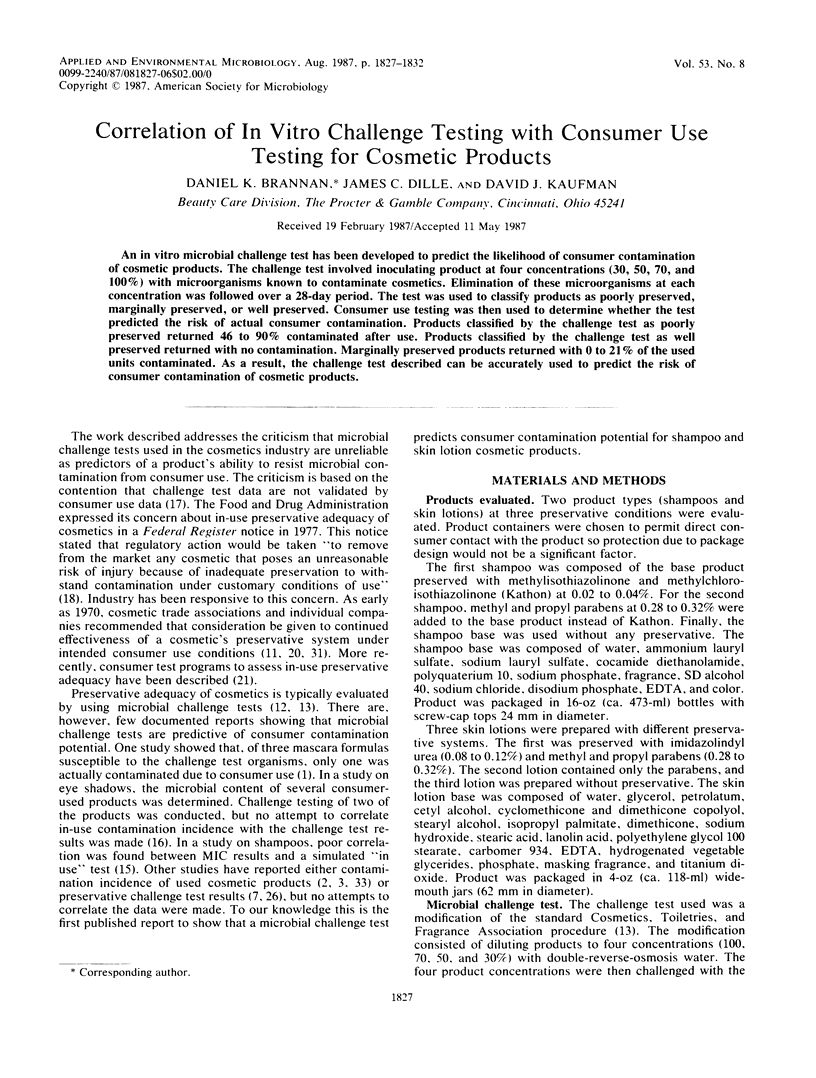
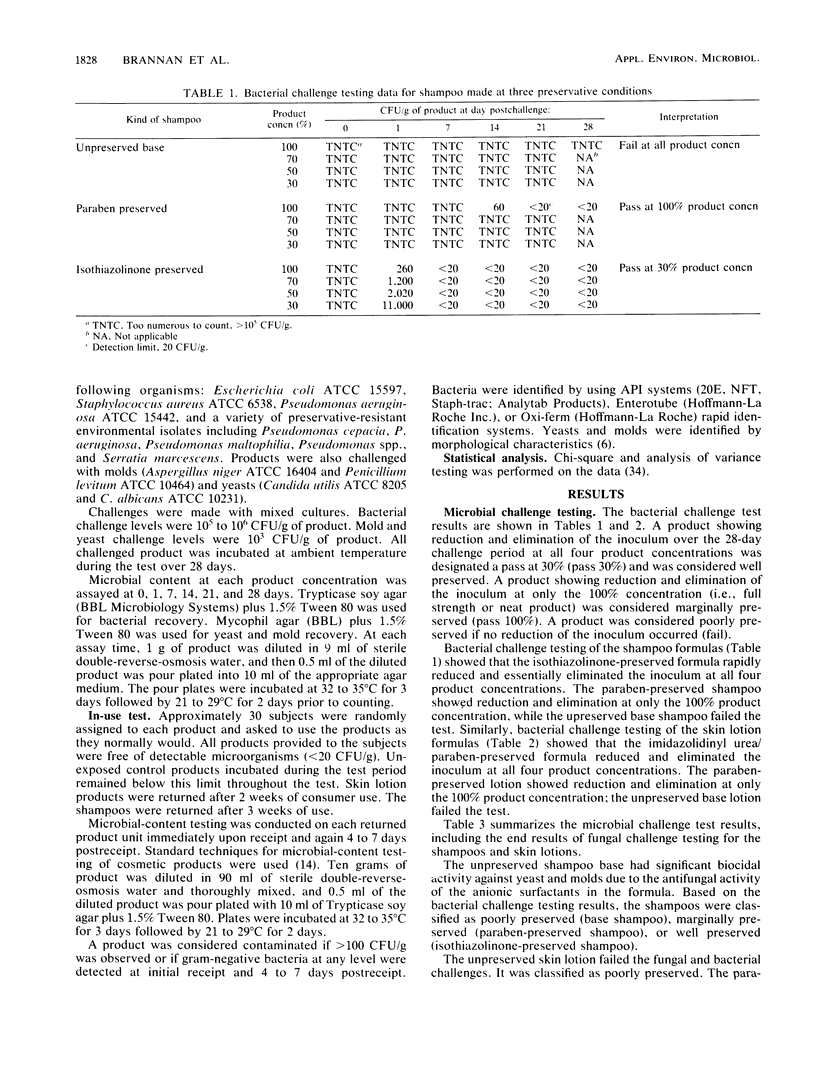
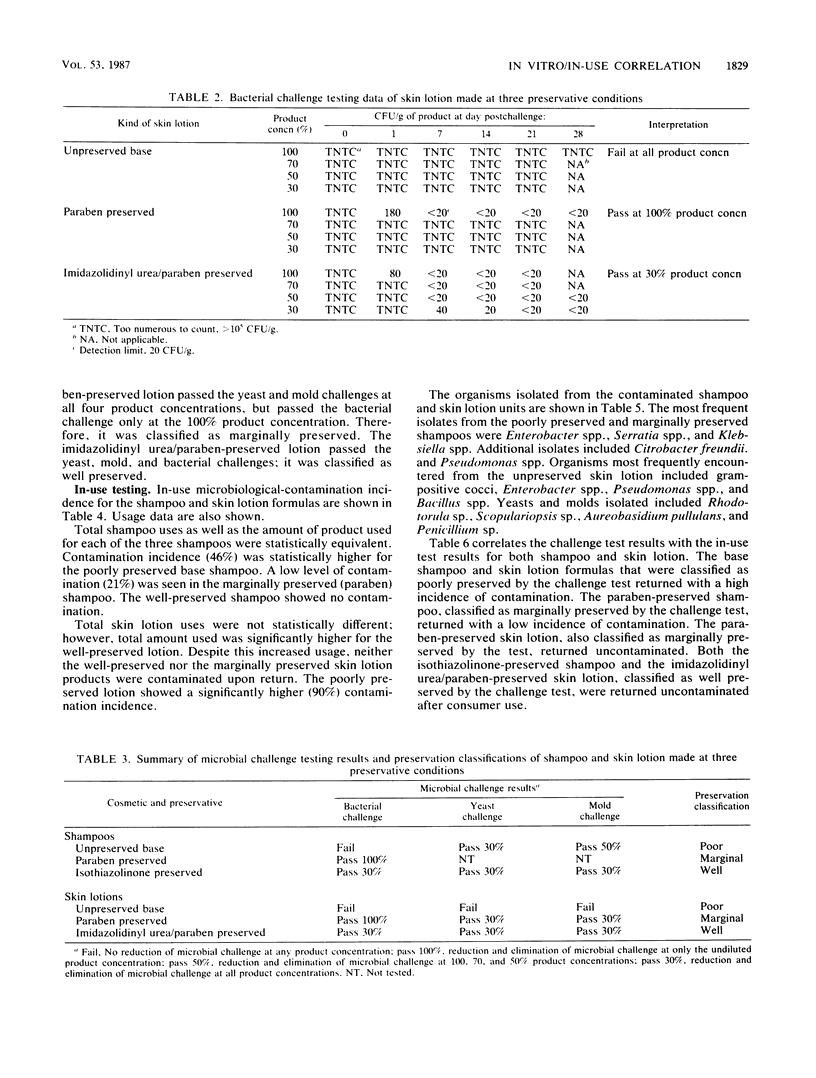

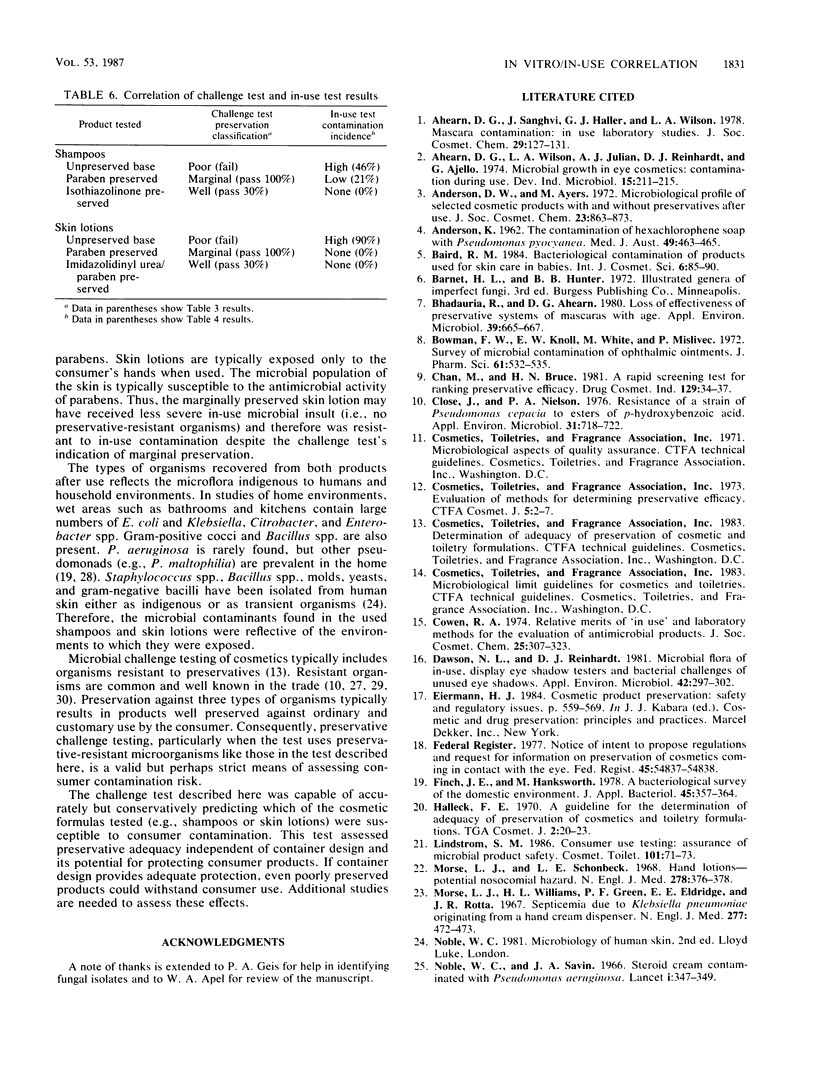
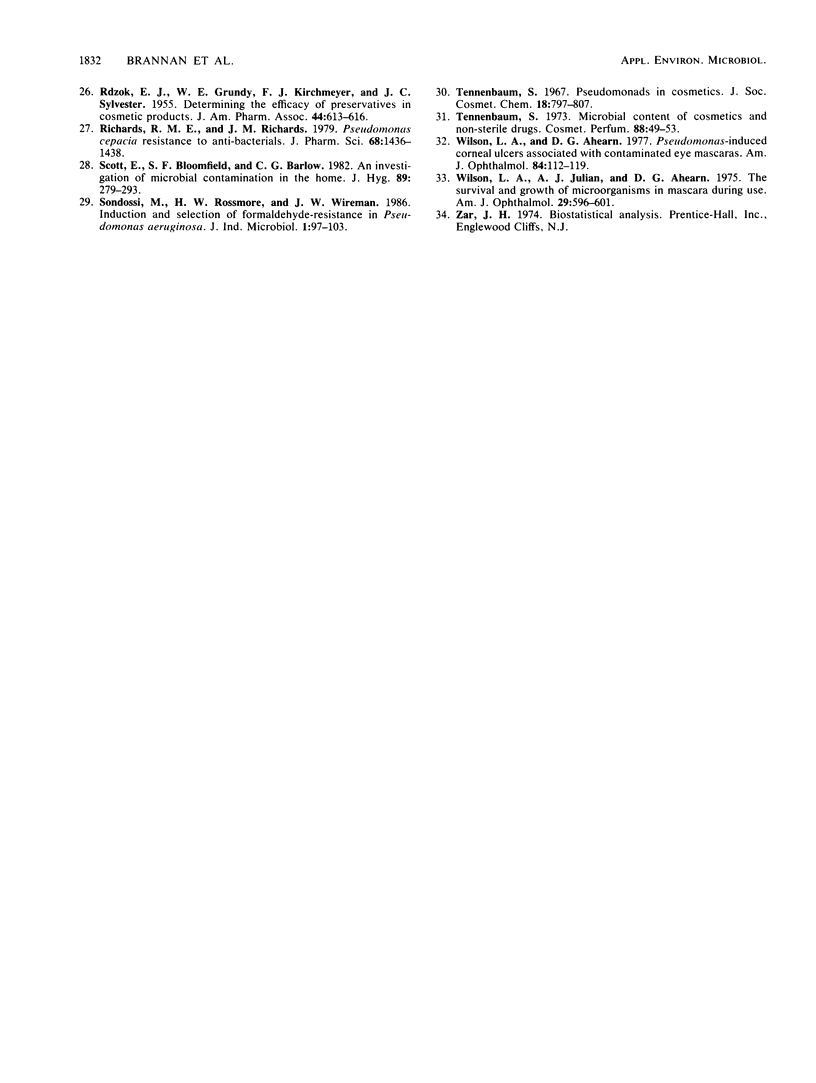
Selected References
These references are in PubMed. This may not be the complete list of references from this article.
- ANDERSON K. The contamination of hexachlorophene soap with Pseudomonas pyocyanea. Med J Aust. 1962 Sep 22;49(2):463–465. doi: 10.5694/j.1326-5377.1962.tb20451.x. [DOI] [PubMed] [Google Scholar]
- Bhadauria R., Ahearn D. G. Loss of effectiveness of preservative systems of mascaras with age. Appl Environ Microbiol. 1980 Mar;39(3):665–667. doi: 10.1128/aem.39.3.665-667.1980. [DOI] [PMC free article] [PubMed] [Google Scholar]
- Bowman F. W., Knoll E. W., White M., Mislivec P. Survey of microbial contamination of ophthalmic ointments. J Pharm Sci. 1972 Apr;61(4):532–535. doi: 10.1002/jps.2600610407. [DOI] [PubMed] [Google Scholar]
- Close J. A., Neilsen P. A. Resistance of a strain of Pseudomonas cepacia to esters of p-hydroxybenzoic acid. Appl Environ Microbiol. 1976 May;31(5):718–722. doi: 10.1128/aem.31.5.718-722.1976. [DOI] [PMC free article] [PubMed] [Google Scholar]
- Dawson N. L., Reinhardt D. J. Microbial flora of in-use, display eye shadow testers and bacterial challenges of unused eye shadows. Appl Environ Microbiol. 1981 Aug;42(2):297–302. doi: 10.1128/aem.42.2.297-302.1981. [DOI] [PMC free article] [PubMed] [Google Scholar]
- Finch J. E., Prince J., Hawksworth M. A bacteriological survey of the domestic environment. J Appl Bacteriol. 1978 Dec;45(3):357–364. doi: 10.1111/j.1365-2672.1978.tb04236.x. [DOI] [PubMed] [Google Scholar]
- Morse L. J., Schonbeck L. E. Hand lotions--a potential nosocomial hazad. N Engl J Med. 1968 Feb 15;278(7):376–378. doi: 10.1056/NEJM196802152780706. [DOI] [PubMed] [Google Scholar]
- Morse L. J., Williams H. L., Grenn F. P., Jr, Eldridge E. E., Rotta J. R. Septicemia due to Klebsiella pneumoniae originating from a hand-cream dispenser. N Engl J Med. 1967 Aug 31;277(9):472–473. doi: 10.1056/NEJM196708312770906. [DOI] [PubMed] [Google Scholar]
- Noble W. C., Savin J. A. Steroid cream contaminated with Pseudomonas aeruginosa. Lancet. 1966 Feb 12;1(7433):347–349. doi: 10.1016/s0140-6736(66)91325-0. [DOI] [PubMed] [Google Scholar]
- RDZOK E. J., GRUNDY W. E., KIRCHMEYER F. J., SYLVESTER J. C. Determining the efficacy of preservatives in pharmaceutical products. J Am Pharm Assoc Am Pharm Assoc. 1955 Oct;44(10):613–616. doi: 10.1002/jps.3030441011. [DOI] [PubMed] [Google Scholar]
- Richards R. M., Richards J. M. Pseudomonas cepacia resistance to antibacterials. J Pharm Sci. 1979 Nov;68(11):1436–1438. doi: 10.1002/jps.2600681127. [DOI] [PubMed] [Google Scholar]
- Scott E., Bloomfield S. F., Barlow C. G. An investigation of microbial contamination in the home. J Hyg (Lond) 1982 Oct;89(2):279–293. doi: 10.1017/s0022172400070819. [DOI] [PMC free article] [PubMed] [Google Scholar]
- Wilson L. A., Ahearn D. G. Pseudomonas-induced corneal ulcers associated with contaminated eye mascaras. Am J Ophthalmol. 1977 Jul;84(1):112–119. doi: 10.1016/0002-9394(77)90334-8. [DOI] [PubMed] [Google Scholar]
- Wilson L. A., Julian A. J., Ahearn D. G. The survival and growth of microorganisms in mascara during use. Am J Ophthalmol. 1975 Apr;79(4):596–601. doi: 10.1016/0002-9394(75)90798-9. [DOI] [PubMed] [Google Scholar]


